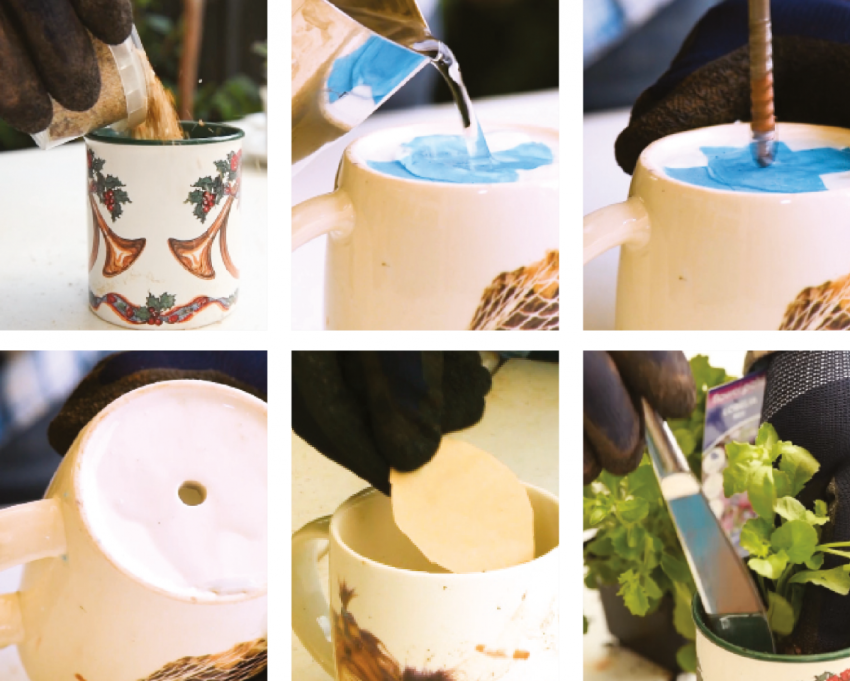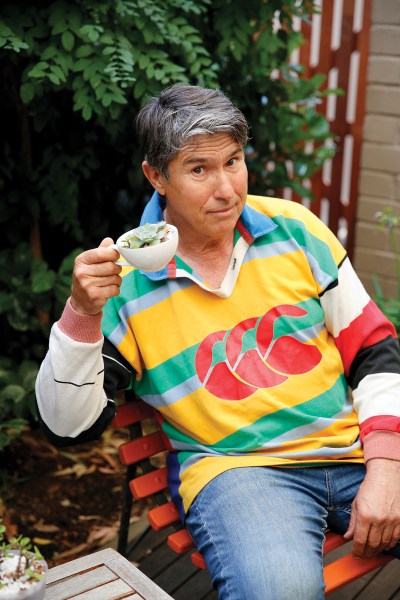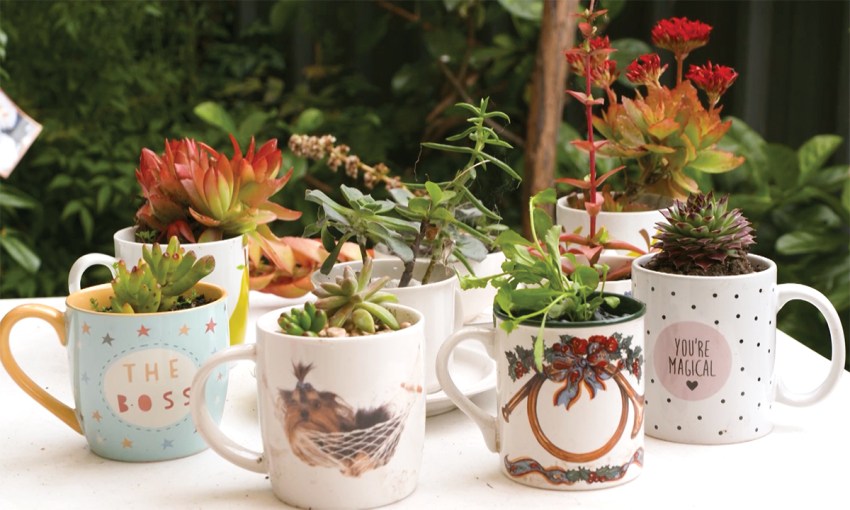How small can you go in creating a garden? Very small, as it turns out. It’s a lovely way to involve kids in gardening, and the finished teacup gardens make perfect gifts.
How to make your own teacup garden
Over the years we accumulate a mountain of coffee and tea cups that tend to clog our kitchens and workspaces. Some may be the remnants of grandma’s tea set, op shop buys when flatting for the first time, or a poor-humoured Kris Kringle present. No matter what they are, you can give these chalices of chance a second life.

Key to this tiny garden’s success is choosing the right plants. Given there is only a minimal amount of soil for plant roots to grow in, what we need are varieties that can adapt to this confined space. Succulents are always a favourite cup winner. Not only are they naturally tough, but cope with root-limited gardening very well.
Small leafed and small-growing succulents work best in both scale and vigour. Consider sedums such as sedum “Little Missy”, which has a trailing growth habit featuring dainty heart-shaped green and white foliage with pink edges and masses of tiny pink and white flowers which cover this gorgeous plant in spring and summer. Echeveria varieties are always popular. Echeveria minima is compact and has tight rosettes of grey-green leaves with blush tips.
Sempervivums are another rosette succulent that develop tight, low clumps and look exceptional in a cup garden.
Haworthias produce fingers of fleshy triangular shoots that point skyward. Low growing and stunning, haworthias come in a huge range of colours and unique markings including the H. fasciata “Superbum” with its white speckled aloe-like leaves.
Lithops are a real curiosity. Native to southern Africa, these very low-growing succulents look like little stones. Producing flowers from their centre in autumn, these blooms open in the afternoon and close at night, adding another layer of intrigue.
Herbs such as sage, mint and parsley are also options for a cup garden. The key is not to overplant as one seedling is often all a cup can take. Depending on your skillset, you can either drill a hole in the base of the cup or leave it as is.

If going without a drainage hole, add a layer of gravel to fill a quarter of the cup. Coarse sand is also a suitable substitute. This helps water drain past the roots and prevent rotting. Next, scoop in the potting mix; a premium grade mix containing wetting agent and slow-release fertiliser will provide an excellent start for any plants. Fill to about a centimetre from the top.
Adding a hole provides for better drainage and less chance of waterlogging and rot. Because cups are ceramic, you’ll need a drill bit suited for tiles. Along with eye protection, the cup can become very hot so gloves are a must. Turn the pot upside down and place a piece of masking tape on the base to help prevent the drill bit from slipping.
Add a drop or two of water to help cool the surface and drill bit and take your time drilling into the cup. Once through, remove the masking tape, give the cup a rinse and place a piece of gauze or shade cloth at the base to prevent gravel and soil from falling through. Follow with a quarter cup of gravel and premium potting mix to just below the cup rim.

Now, it’s time to add the plants. Using a dibbler – a knife or pop-stick work well – move away the potting mix and place the plants. You can create interest by mixing and matching leaf colour, sizes and shapes, although it doesn’t seem to matter which plants are combined, it all looks great. Press the potting mix around the plant stems to secure and finish off with a layer of decorative gravel.
The beauty about using succulents is they can be planted in a range of ways. As rooted specimens, freshly cut slips or even as single leaves. They are the most amazingly tough and versatile plants and perfect for containers like these.
Of course, watering is important, especially with non-draining cups. Keep an eye that they don’t get too wet. You won’t have that worry with the free-draining cups. A little drink, every week or so for succulents and more regularly with herbs, seems to keep them happy and growing a treat.
These make great gifts, add a whimsical styling touch to the yard and would be everyone’s cup of tea!
This story first appeared in the Summer 2021 issue of SALIFE Gardens & Outdoor Living magazine.



